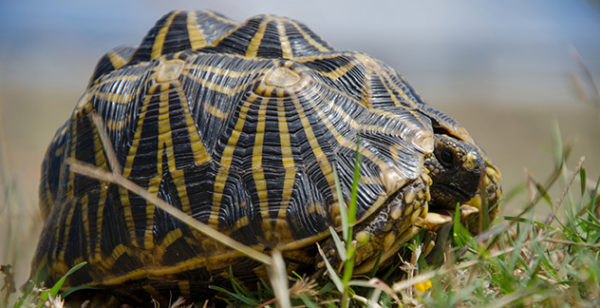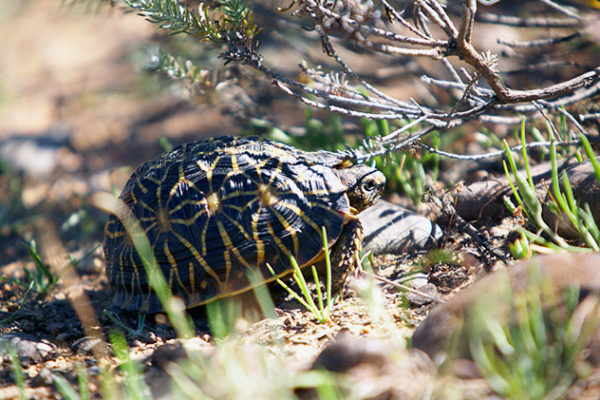One of the world’s rarest species of tortoise, the geometric tortoise or Psammobates geometricus is a gorgeous specimen of the chelonian family that dons a domed geometric shell with striking sunset yellow and black radiating patterns.
Once fully grown, this tortoise, also locally known as a suurpootjie, reaches a size of five to six inches, but this already-endangered creature has been hit hard by wildfires and the Western Cape’s ongoing drought.
CapeNature’s Ecological Coordinator, Vicki Hudson, elaborated on how the Western Cape fires and drought have affected her research and the Conservation Detection Dog programme she first introduced in 2012 as a tool to survey geometric turtles and help with conservation efforts.
The various wildfires that affected the region caused the tortoises to suffer from heat stress, which causes their urine to pass in clots, Hudson said.
“When the urine coagulates it gets dark red. When you stress the tortoise or disturb it, it sets up a defense mechanism, so that’s the first thing it does. When this is done when it hasn’t had water, the urine gets dark blood-red and gets congealed.”

Along with this, the destruction to plants caused by the fires has meant the small creatures have been left more exposed to predators due to the absence of vegetation covering. This lack of vegetation also means a deficiency of available food sources.
The drought the Western Cape has not helped the situation.
“The areas haven’t been able to develop because there is no water. Because the tortoises get heat stressed they can’t rehydrate themselves, so we only started our research on September last year. We normally go from mid-April to October for normal research.”

In 2012, CapeNature initiated the pilot project to investigate the use of conservation detection dogs to improve geometric tortoise surveying techniques. This specific project is the first live-target detection work of its kind in South Africa.
Together with local conservation partners the University of the Western Cape, Elandsberg Nature Reserve, Southern African Tortoise Conservation Trust – a subsidiary of the Turtle Conservancy, and the Working Dogs for Conservation, Hudson has been able to expand the research done around geometric tortoises.
Conservation detection dog teams work to locate biological targets of interest. This includes live fauna, flora and carcasses, and helps professionals obtain information about target species.
The geometric tortoise was thought to be extinct in the late 1950s, but was discovered to still be surviving and categorised in the Red List assessment between the years 1982 and 1994, placing it as “vulnerable”. In 1996, this status changed to “endangered” and since 2015, it has been in the “critically endangered” category.
Get more information about the geometric tortoise here.
Pictures: CapeNature

